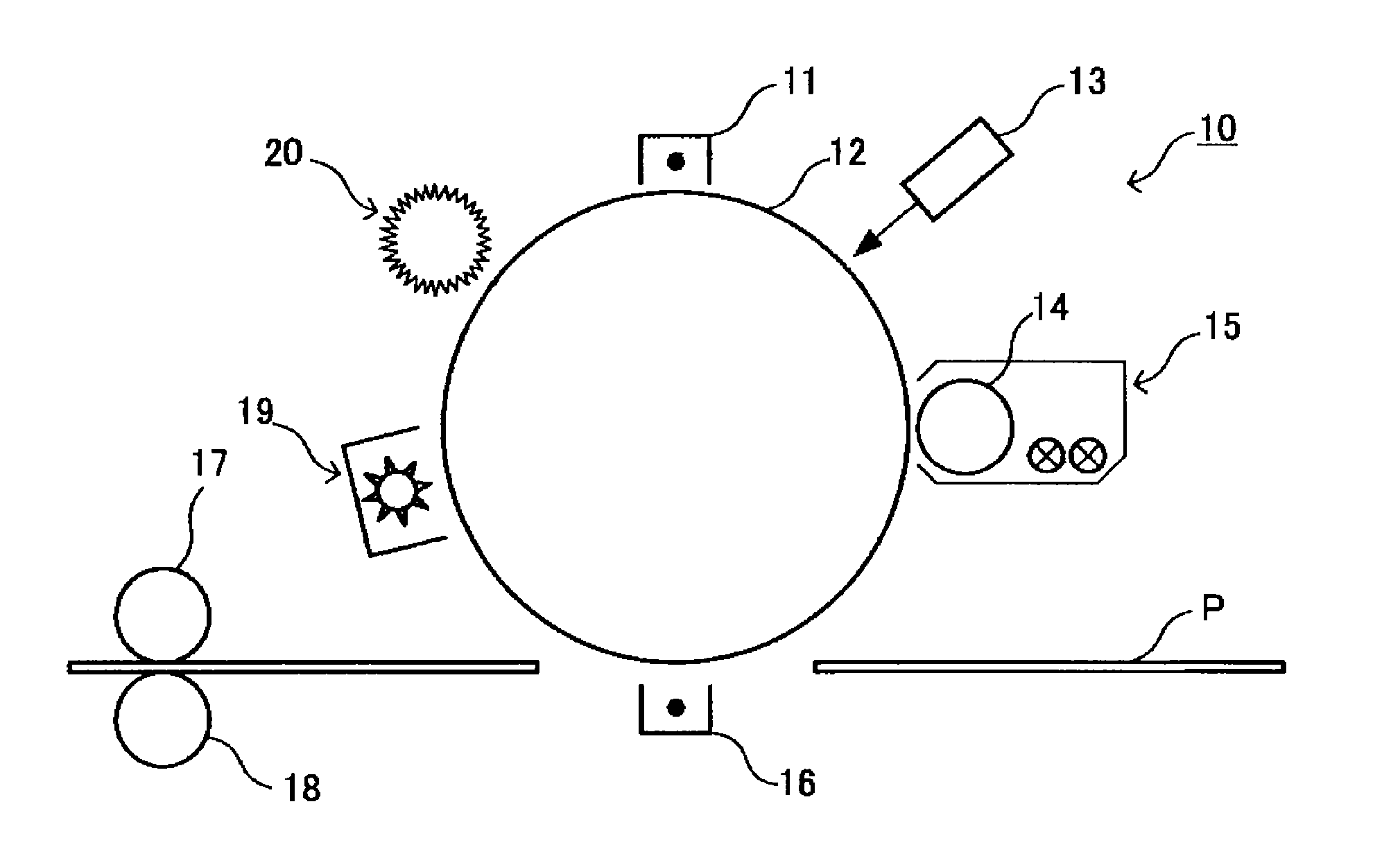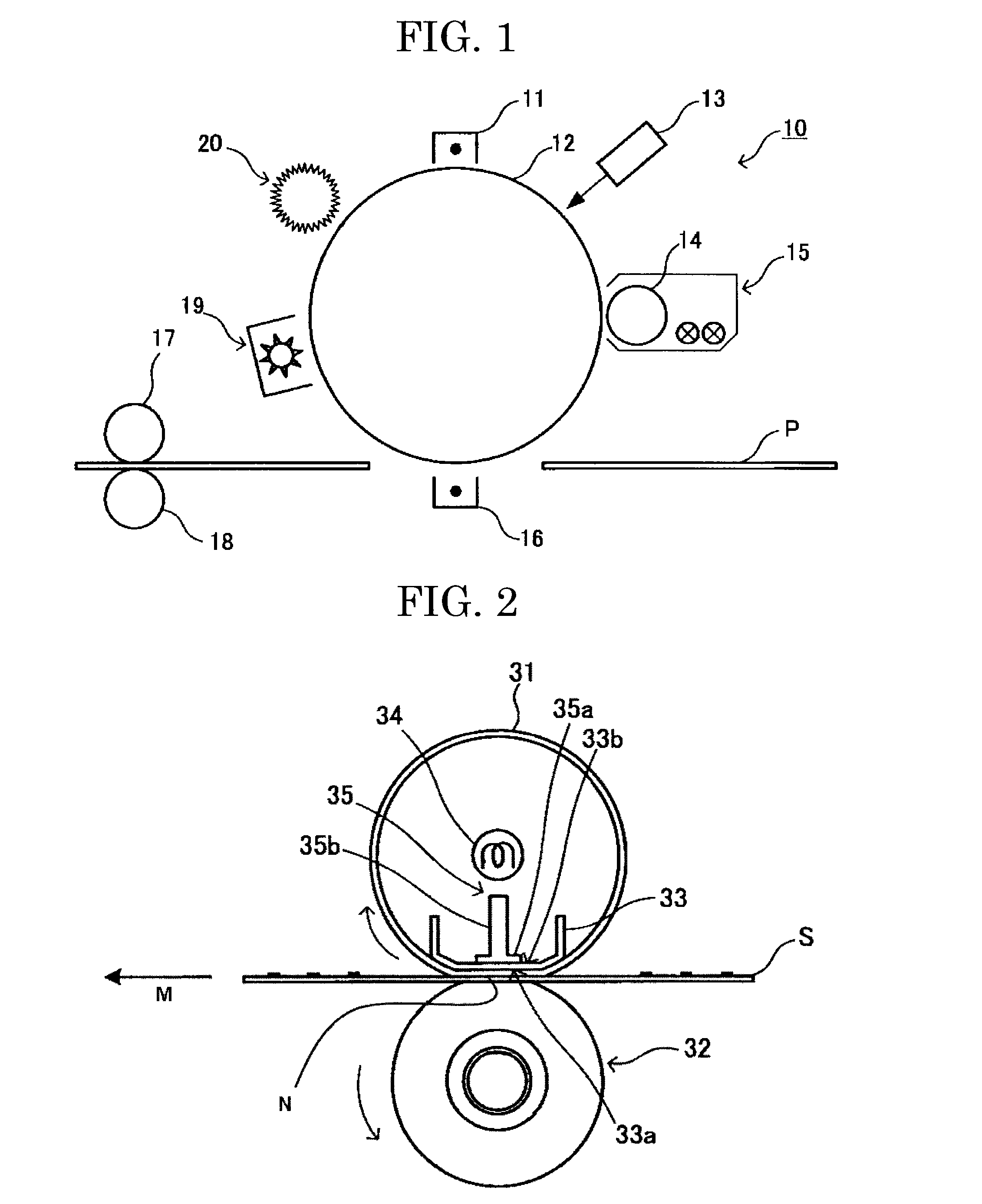Image forming apparatus
a technology of forming apparatus and forming plate, which is applied in the direction of electrographic process apparatus, instruments, developers, etc., can solve the problems of excessive melting of toner, insufficient fixing, and gradation in temperature inside the toner layer, so as to shorten the first print output time, improve the effect of fixing property and good offset resistan
- Summary
- Abstract
- Description
- Claims
- Application Information
AI Technical Summary
Benefits of technology
Problems solved by technology
Method used
Image
Examples
example 1
Synthesis of Organic Particle Emulsion
[0214]A reaction container equipped with a stirring rod and a thermometer was charged with 683 parts of water, 11 parts of sodium salt of sulfuric acid ester of ethylene oxide adduct of methacrylic acid (ELEMINOL RS-30, product of Sanyo Chemical Industries Ltd.), 83 parts of styrene, 83 parts of methacrylic acid, 110 parts of butyl acrylate and 1 part of ammonium persulfate. The resultant mixture was stirred at 400 rpm for 15 min to thereby obtain a white emulsion. The white emulsion was heated to a system temperature of 75° C. and was allowed to react for 5 hours. Then, 30 parts by mass of a 1% by mass aqueous ammonium persulfate solution was added to the reaction mixture, followed by aging at 75° C. for 5 hours, to thereby obtain an aqueous dispersion [particle dispersion liquid 1] of a vinyl resin (a copolymer of styrene-methacrylic acid-butyl acrylate-sodium salt of sulfate ester of methacrylic acid-ethylene oxide adduct). The volume average...
example 2
[0226][Toner 2] was obtained in the same manner as in Example 1 except that the [low-molecular-weight polyester 1] was changed to [low-molecular-weight polyester 2] having a number average molecular weight of 3,200, a weight average molecular weight of 9,500, a Tg of 47° C. and an acid value of 19.0.
example 3
[0227][Toner 3] was obtained in the same manner as in Example 1 except that the [low-molecular-weight polyester 1] was changed to [low-molecular-weight polyester 3] having a number average molecular weight of 4,200, a weight average molecular weight of 8,200, a Tg of 52° C. and an acid value of 18.0 and to [crystalline polyester 2] having a melting point of 89° C. and a SP value of 9.5.
PUM
 Login to View More
Login to View More Abstract
Description
Claims
Application Information
 Login to View More
Login to View More - R&D
- Intellectual Property
- Life Sciences
- Materials
- Tech Scout
- Unparalleled Data Quality
- Higher Quality Content
- 60% Fewer Hallucinations
Browse by: Latest US Patents, China's latest patents, Technical Efficacy Thesaurus, Application Domain, Technology Topic, Popular Technical Reports.
© 2025 PatSnap. All rights reserved.Legal|Privacy policy|Modern Slavery Act Transparency Statement|Sitemap|About US| Contact US: help@patsnap.com


